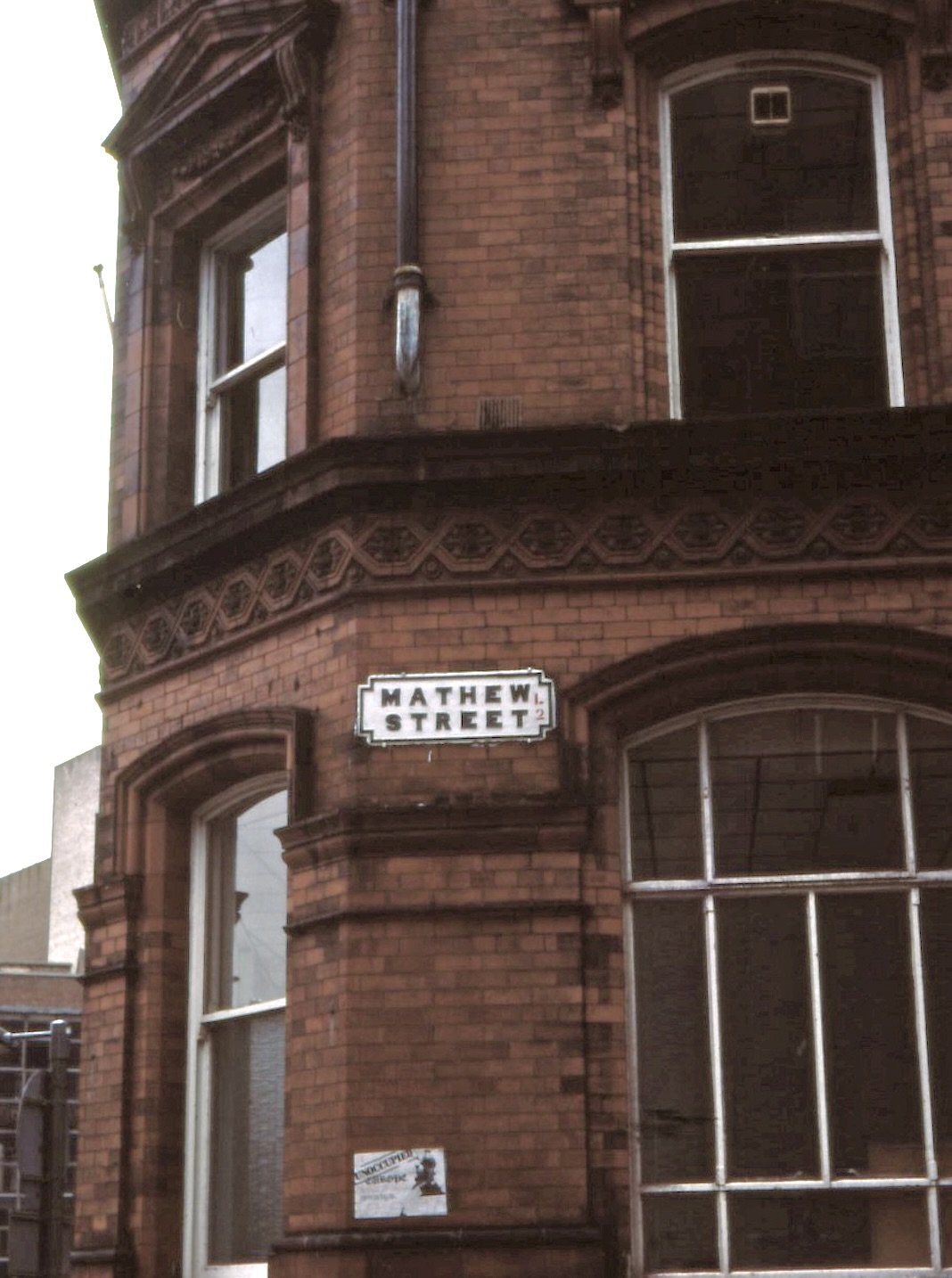Buddy! Your attitude is showing! (A quick study of tone)
Some of my Liverpool stuff, old and new.
Readers! Yes, I’m still around. Thankfully, work has taken a lot of my time these past couple of years, and now that Stu has retired, it’s been travel travel travel.
But I’ve been thinking of a way back into the blog. I’m not really into the Substack thing (though I do admire people who feel they can create content on command like that. I just don’t think I’m made that way).
For those of you who follow me on the socials, you might have read that I’ve written a sequel to my 2017 novel, Nuala: A Fable (UAP). I hadn’t planned to, but here we are. The pandemic was good for something after all! I also have three other books in the works that will take years to complete. Which is fine. I’ll be sixty later this year, and I figure having six books out by now is not a bad way to have spent one’s time.
I’ve been thinking about Liverpool a lot these past years (as I always do; it’s the city of my heart), and I know I have more to write about it; it’s one of my new books in progress. My third book, fake Paul (Turnstone), is set in a slightly fictionalized Liverpool City Centre, and if anyone cared to map out the streets of Nuala and the sequel novel, they’d find a lot of similarities in the layout of the streets and the feel of the fictional town I’ve created.
~~~
I’ve been to Liverpool several times and it strikes me that as I age, the way the city perceives me changes. This is a rich vein to mine, given the excellent, evergreen talk of how women are perceived/received as we age and/or as we travel. I plan to go again in the not-too-distant future and continue work on my book about it. Some book. I dunno. And I don’t have to know. It will tell me what it’s supposed to be; they always do.
As a result, of course, I’ve been reading everything about the city. I’ve been picking up books, street maps, travel guides, sifting through my old scrapbook photos and videos, watching hours of webcams and drone footage, and devouring anything else I can.
But this is an editing blog, and it might be a bit more subtle than what you’re used to seeing from me here. So let’s get to it.
The above photo is Paul McCartney’s childhood bedroom at 20 Forthlin Road, Allerton, Liverpool (the address will become important later). Paul lived here from 1955 until he moved out when The Beatles became famous and he bought his father a new house. This photo is authorized by The National Trust. I swear I did not take it, though people do take the photos they’re told they’re not allowed to take. Because a lot of people are… well… people.
I’ve been in this room. I won’t bother trying to describe what that felt like because I will ugly cry. (Plus, I wrote all about it in fake Paul.) IYKYK. Especially if you know anything at all about me and my fifty years of love for Sir Macca.
I took this photo of Mathew Street in 1983 as an eighteen-year-old. I’m frankly amazed the sign was still an actual sign. So many of the signs having anything to do with the Beatles have been stolen so often that most are painted and then painted again when they become illegible with graffiti. Below is a picture of that same building in 2024. The whole street is a Beatles Mecca (or a Beatles nightmare, depending on how well one can accept the touristy transformation of the places they revered).
The statues are everywhere. Everything Beatles is everywhere. Regardless of what you think of the modernization of the street, it’s no longer the same street as it was when I first saw it just three years after John Lennon had been murdered.
~~~
Which might be what stopped me dead in my tracks when reading the book above. The author is from Southport, north of Liverpool, and he knows his stuff. I would never question that. What stopped me near the end of this book is a matter of tone. I had been with him until nearly the end. As the narrative voice of a non-fiction, largely historical text, the author is mostly neutral, as he should be. It’s clear he loves the city, but rarely intrudes to say whether this pub is superior to that, and so on.
The Beatles take up very little space in the book and rightly so. They are the tiniest of blips in the city’s history which (it’s generally believed) officially dates back to 1207. There are dozens of books about the Beatles, and even more about their Liverpool. They’re not the focus of this book and in one single, seemingly tossed-off paragraph, this author makes sure we know it.
It’s fine to not be a fan of The Beatles. Billions of people aren’t. It’s also fine to downplay how much traction the city you’re writing about gets, solely because they existed there. And without saying all of that, this author says it so loudly, The Stones start playing somewhere in your neighbourhood to drown out his seeming disapproval.
The author claims that in modern-day Mathew Street, one can see middle-aged Beatles’ fans in the Cavern Quarter “clutching” old copies of “Sergeant Pepper.” He then describes these middle-aged fans getting on a bus on a pilgrimage to “20 Forthlin Avenue.”
I’ve been to Mathew Street. A lot. Never once, no matter what my age (eighteen or fifty), have I ever seen anyone, middle-aged or otherwise, “clutching” an LP of what is actually called Sgt Pepper’s Lonely Hearts Club Band on the album itself (or Sgt Peppers Lonely Hearts Club Band if you look at the drum on the cover, which omits the apostrophe in Peppers). Why would anyone be doing that, unless they had just purchased that album? But they didn’t, as the author is careful to say that the albums the middle-aged fans are clutching are “old.”
What do these imaginary middle-aged fans who live in this author’s head think is going to happen if they carry old Beatles albums around? Ringo Starr would saunter out of a Mathew Street pub and say, “Sign that record for you, luv?” The belief that carting around old Beatles LPs as you walk by The Cavern Club will make something magic happen is a bit like visiting Eleanor Rigby’s gravestone and expecting her spirit to rise out of it and reveal some hidden truth about the Beatles. Or Paul McCartney would be hanging around that day leaving flowers?
As for the National Trust bus to Paul’s childhood home, an author from that part of England with full access to the internet and google maps (hell, he could likely have walked right past it any time he wanted to) could have taken four seconds to check that Paul McCartney’s childhood home is on 20 Forthlin Road, not Avenue.
I must say—and it’s entirely possible I’m wrong; I accuse this author of nothing—that these don’t feel like mistakes to me. They’re too easy to check and too easy to correct. As a reader, am I to believe that one of the most famous addresses in Liverpool got through every level of editing incorrectly as this book went into production? There are plenty of errors elsewhere in the book, but there are plenty of errors in every book. I’ve never read one without them.
The cumulative effect of these few sentences—the incorrect album title, the clichéd “middle-aged” fans clutching them as they go from Beatles site to Beatles site, and the incorrect address of one of the most famous National Trust historical sites—feels like a dismissal of this one small part of Liverpool’s history. Regardless of the author’s personal feelings about The Beatles’ place in the city’s legacy (how would I know?), the realities of book publishing should ensure that these important details, so easy to correct, were left incorrect as they are for other reasons.
As an editor, I’m always checking for tone, and it’s something you can check for in your own work and the work of others. Is the authorial voice intruding on the text? Is a character a mouthpiece for what the author wants to say, or is the utterance something the character would naturally say? Does the author stray into personal bias (as I feel might be happening here), rather than simply reporting that the Beatles’ sites continue to remain relevant as tourist attractions several decades on?
I closed the book disappointed. Not because of the dismissal of The Beatles and their fans. I don't care about that. I closed it disappointed about the authorial voice and its seeming intent.




